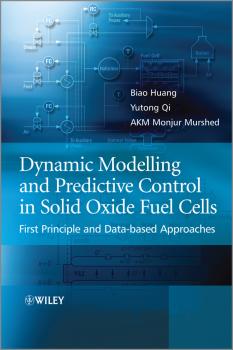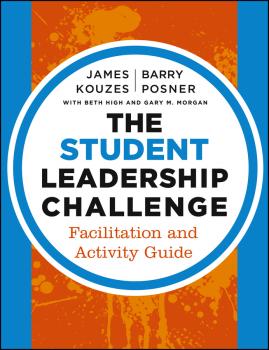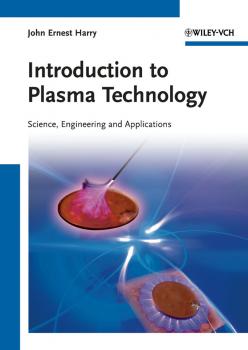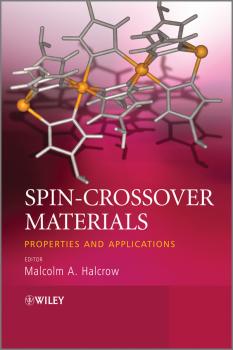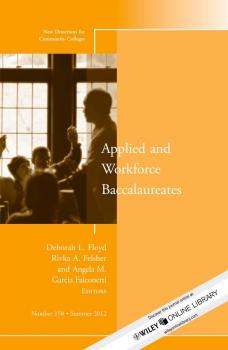Прочая образовательная литература
Различные книги в жанре Прочая образовательная литератураDynamic Modeling and Predictive Control in Solid Oxide Fuel Cells. First Principle and Data-based Approaches
The high temperature solid oxide fuel cell (SOFC) is identified as one of the leading fuel cell technology contenders to capture the energy market in years to come. However, in order to operate as an efficient energy generating system, the SOFC requires an appropriate control system which in turn requires a detailed modelling of process dynamics. Introducting state-of-the-art dynamic modelling, estimation, and control of SOFC systems, this book presents original modelling methods and brand new results as developed by the authors. With comprehensive coverage and bringing together many aspects of SOFC technology, it considers dynamic modelling through first-principles and data-based approaches, and considers all aspects of control, including modelling, system identification, state estimation, conventional and advanced control. Key features: Discusses both planar and tubular SOFC, and detailed and simplified dynamic modelling for SOFC Systematically describes single model and distributed models from cell level to system level Provides parameters for all models developed for easy reference and reproducing of the results All theories are illustrated through vivid fuel cell application examples, such as state-of-the-art unscented Kalman filter, model predictive control, and system identification techniques to SOFC systems The tutorial approach makes it perfect for learning the fundamentals of chemical engineering, system identification, state estimation and process control. It is suitable for graduate students in chemical, mechanical, power, and electrical engineering, especially those in process control, process systems engineering, control systems, or fuel cells. It will also aid researchers who need a reminder of the basics as well as an overview of current techniques in the dynamic modelling and control of SOFC.
The Student Leadership Challenge. Facilitation and Activity Guide
The Student Leadership Challenge: Facilitation and Activity Guide gives educators the flexible, modularized building blocks for teaching students how to apply Kouzes and Posner's Five Practices of Exemplary Leadership® as outlined in their best-selling book The Student Leadership Challenge . The Facilitation and Activity Guide includes: Language and guidance for teaching each leadership practice and its associated leadership behaviors Experiential, reflective, and film activities to bring each leadership practice to life Direction on using the Student Leadership Practices Inventory Advice for working with students using the Student Workbook and Personal Leadership Journal to help them deliberately practice, reflect, and commit to liberating the leader within Curriculum suggestions for various educational contexts Praise for The Student Leadership Challenge: Facilitation and Activity Guide «From what, to so what, and now what, this guide helps take educators on a journey of not only understanding The Five Practices of Exemplary Leadership but also specifically on how to apply, practice, and teach the nuances of these exemplary leadership ways of being.» —Laura Osteen , professor of higher education, Florida State University, and director, Florida State's Center for Leadership and Civic Education «The Facilitation and Activity Guide would have helped me not only to develop a better leadership program but to be a better leader myself. For those administering The Five Practices, this guide 'models the way' and will be one of your best coaches.» —Sam Eriksmoen , former director, Emerging Leaders Program, University of North Dakota «Educators working at all levels will benefit from this resource. It is practical, applicable to diverse sectors, and works.» —Katie Burke , assistant director, L.E.A.D (Leadership Education & Development), Florida Atlantic University
Principles of Toxicology. Environmental and Industrial Applications
A fully updated and expanded edition of the bestselling guide on toxicology and its practical application • Covers the diverse chemical hazards encountered in the modern work and natural environment, and provides a practical understanding of these hazards • New chapters cover the emerging areas of toxicology such as omics, computational toxicology, and nanotoxicology • Provides clear explanations and practical understanding of the fundamentals necessary for an understanding of the effects of chemical hazards on human health and ecosystems • Includes case histories and examples from industry demonstrate the application of toxicological principles • Supplemented with numerous illustrations to clarify and summarize key points, annotated bibliographies, and a comprehensive glossary of toxicological terms
Introduction to Plasma Technology. Science, Engineering, and Applications
Written by a university lecturer with more than forty years experience in plasma technology, this book adopts a didactic approach in its coverage of the theory, engineering and applications of technological plasmas. The theory is developed in a unified way to enable brevity and clarity, providing readers with the necessary background to assess the factors that affect the behavior of plasmas under different operating conditions. The major part of the book is devoted to the applications of plasma technology and their accompanying engineering aspects, classified by the various pressure and density regimes at which plasmas can be produced. Two chapters on plasma power supplies round off the book. With its broad range of topics, from low to high pressure plasmas, from characterization to modeling, and from materials to components, this is suitable for advanced undergraduates, postgraduates and professionals in the field.
Spin-Crossover Materials. Properties and Applications
The phenomenon of spin-crossover has a large impact on the physical properties of a solid material, including its colour, magnetic moment, and electrical resistance. Some materials also show a structural phase change during the transition. Several practical applications of spin-crossover materials have been demonstrated including display and memory devices, electrical and electroluminescent devices, and MRI contrast agents. Switchable liquid crystals, nanoparticles, and thin films of spin-crossover materials have also been achieved. Spin-Crossover Materials: Properties and Applications presents a comprehensivesurvey of recent developments in spin-crossover research, highlighting the multidisciplinary nature of this rapidly expanding field. Following an introductory chapter which describes the spin-crossover phenomenon and historical development of the field, the book goes on to cover a wide range of topics including Spin-crossover in mononuclear, polynuclear and polymeric complexes Structure: function relationships in molecular spin-crossover materials Charge-transfer-induced spin-transitions Reversible spin-pairing in crystalline organic radicals Spin-state switching in solution Spin-crossover compounds in multifunctional switchable materials and nanotechnology Physical and theoretical methods for studying spin-crossover materials Spin-Crossover Materials: Properties and Applications is a valuable resource for academic researchers working in the field of spin-crossover materials and topics related to crystal engineering, solid state chemistry and physics, and molecular materials. Postgraduate students will also find this book useful as a comprehensive introduction to the field.
Strengthening Community Colleges Through Institutional Collaborations. New Directions for Community Colleges, Number 165
This issue illustrates examples of effective collaborations written by community college presidents, administrators, faculty, and leaders of state governments and national organizations. Each has contributed a story illustrating a successful program that required the efforts of a range of individuals and recommendations for others to build their own successes. Topics include: How to build effective dual enrollment programs to motivate high school students in rural areas to pursue higher education Why collaboration is crucial for institutions that apply for federal grant funding Effective partnering with institutional research and technology departments to advance student services and college-wide strategic planning How to infuse service learning into curricula to engage and encourage minority students at community colleges to focus their career aspirations How to advance community college study abroad programs through collective participation of administrators and faculty, and outside organizations Creating and sustaining effective partnerships between a state and its local colleges. This is the 165th volume of this Jossey-Bass higher education quarterly report series. An essential guide for presidents, vice presidents, deans, and other leaders in today's open-door institutions, this quarterly provides expert guidance in meeting the challenges of their distinctive and expanding educational mission.
Applied and Workforce Baccalaureates. New Directions for Community Colleges, Number 158
Are applied and workforce baccalaureate degrees offered by community colleges a natural extension of their mission to provide relevant educational programs to their constituents? Or is this emerging emphasis on offering baccalaureate degrees a radical deviation from the tried-and-true mission of comprehensive community colleges? In short, is this movement more evolutionary or revolutionary? This issue does not take sides, but provides a deeper understanding of this movement from the perspectives of practitioners and scholars alike. The opportunities and challenges associated with offering these new baccalaureate degrees is illustrated with institutional examples. This is the 158th volume of this Jossey-Bass quarterly report series. Essential to the professional libraries of presidents, vice presidents, deans, and other leaders in today's open-door institutions, New Directions for Community Colleges provides expert guidance in meeting the challenges of their distinctive and expanding educational mission.
Technology Management. New Directions for Community Colleges, Number 154
Gain a greater understanding of technology management and what it means to the community college campus today. Effective planning, directing, control, and coordination of technological capabilities can shape and help accomplish your institution's strategic and operational objectives. Editor Tod Treat, assistant professor in the Department of Education Policy, Organization, and Leadership at the University of Illinois at Urbana-Champaign, and contributing authors explore community college technology management from a variety of vantage points. They argue that technology management should be a strategy on par with physical, human and fiscal management. They demonstrate how technology can be used to reach students; how it plays a critical role in institutional research; how it impacts faculty and staff and how it continues to shape broad trends in teaching and learning. This is the 154th volume of the Jossey-Bass quarterly report series New Directions for Community Colleges. Essential to the professional libraries of presidents, vice presidents, deans, and other leaders in today's open-door institutions, New Directions for Community Colleges provides expert guidance in meeting the challenges of their distinctive and expanding educational mission.
Biohybrid Systems. Nerves, Interfaces and Machines
The discipline of neurodesign is a highly interdisciplinary one, while at the same time in the process of maturing towards real-life applications. The breakthrough about to be achieved is to close the loop in communication between neural systems and electronic and mechatronic systems and actually let the nervous system adapt to the feedback from the man-made systems. To master this loop, scientists need a sound understanding of neurology, from the cellular to the systems scale, of man-made systems and how to connect the two. These scientists comprise medical scientists, neurologists and physiologists, engineers, as well as biophysicists. And they need the topics in a coherently written work with chapters building upon another.
Immunology. Mucosal and Body Surface Defences
2012 PROSE Award, Clinical Medicine: Honorable Mention The vast majority of medically important pathogens infect their host across a body surface such as the skin, or across a mucosal tissue such as the respiratory tract or intestines, as these sites are the ones exposed to the external environment. By focusing on immunity at mucosal and body surfaces this book presents a fresh, new approach to the teaching of immunology. After an introduction to the basic structure of the immune system, the book looks at two important families of signalling molecules: cytokines and chemokines, before covering the workings of the mucosal immune system. It continues by examining immunity against the four major groups of pathogens – viruses, bacteria, fungi and parasites, and concludes by looking at disorders of the immune system, mucosal tumour immunology and the process of vaccination. A fresh, new approach to the subject focusing on mucosal and body surfaces. Describes the mucosal immune systems of the gastrointestinal, respiratory and urogenital tracts, as well as the skin. Details the important roles of cytokines and chemokines in an immune response. Separate chapters devoted to immunity against viruses, bacteria, fungi and parasites. Includes chapter summaries, boxes with topics of special interest and an extensive glossary. Clearly written and well- illustrated in full colour throughout. Students across a range of disciplines, including biology, biochemistry, biomedicine, medicine and veterinary sciences, will find this book invaluable, both as an introduction to basic immunology and as a guide to mucosal immune defence mechanisms.
